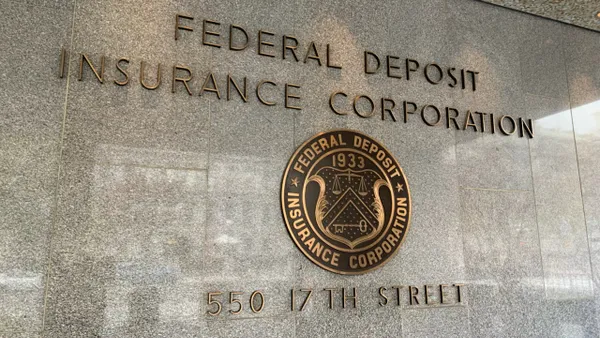Introduction
The banking industry is navigating a unique regulatory crossroads. On one hand, the current administration’s focus on deregulation promises reduced oversight and consolidation of federal agencies. On the other hand, new compliance requirements—most notably the 1071 Small Business Lending Rule—are introducing layers of complexity and scrutiny.
Financial institutions are facing a double-edged sword - deregulation might simplify some areas, but new rules like 1071 are raising the stakes in ways many institutions aren’t ready for.
The Unique Challenges of 1071
The CFPB’s proposed Small Business Lending rule (Dodd-Frank 1071) is not just another box to check for compliance teams—it represents a fundamental cultural shift, particularly for commercial lenders, along with a new wave of data collection.
“Commercial lenders have always done things a certain way, and now we’re requiring them to adopt practices they’ve never dealt with. It’s a tough sell,” says Tory Haggerty, a banking compliance expert and former FDIC regulator.
Getting lenders to buy into the purpose of 1071 may be one of the biggest hurdles but the data collection piece represents its own challenges. “People think 1071 is a fair lending regulation, but it’s not,” Haggerty explains. “It’s a data collection regulation. The fair lending piece comes later, once the data is aggregated and analyzed. But right now, banks need to focus on getting the data right.” While it aims to ensure fair lending, its immediate focus is on gathering accurate and consistent data—a task that many banks find daunting.
Why Clarity and Consistency Matter
For banks to comply with 1071 effectively, they need clear, detailed policies that eliminate guesswork for lenders. According to Haggerty, ambiguity in procedures can lead to inconsistent—and sometimes discriminatory—practices.
“Once I audited a bank where their guidance was ‘no recent late payments,’” he recalls. “I asked, ‘What does recent mean? Three months? Twelve months? Twenty-four months?’ Without clear policies, every lender interprets it differently. That’s how you risk unintentional discrimination—one lender applies a three-month rule for one borrower and a twelve-month rule for another.”
He advises banks to create precise, actionable policies and to train their teams thoroughly. “Clear policies and procedures consistently followed are 75% of the battle,” he says. “If you get that part right, you’re most of the way there.”
Deregulation: Changing Focus, Not Easing Pressure
While some may see deregulation as a reprieve, banks and credit unions must beware of complacency. Deregulation isn’t a free pass, it’s more about reallocating focus. While some areas might see slack, others, like fair lending and data transparency, are still under a microscope.
This push-pull dynamic makes it essential for banks to remain proactive. The biggest mistake banks can make is assuming the rules won’t evolve or that regulators won’t enforce the standards already in place.
Lessons from HMDA
Many banks are treating 1071 as uncharted territory, but Haggerty sees clear parallels to the challenges faced during the expansion of the Home Mortgage Disclosure Act (HMDA) in 2018.
Haggerty offers practical advice for banks to stop waiting:
- Train Your Lenders: You can’t implement a rule you don’t fully understand, create solid foundations of training before deciding on an action plan
- Build Procedures and Checklists: Spell out exactly how to collect, report, and scrub the data. Good procedures don’t just ensure compliance; they help with employee turnover and training.
- Take Advantage of the Practice Period: Use the time you have now to work out the kinks. Start practicing data collection and testing your systems so you’re not scrambling when the rule goes live.
The Stakes Are High
The decisions banks make today will have long-term consequences. Once 1071 data is submitted, it will become the basis for evaluating lending practices for years to come.
“You can’t go back and change your performance from the past. The same is true for 1071. The data you collect now is what you’ll have to live with in the future,” says Haggerty. The first wave of 1071 data will likely expose gaps in lending practices, with some banks facing unflattering outcomes.
Conclusion
The message to financial institutions is simple: “Rip off the Band-Aid. Start training your team, building your procedures, and collecting your data. The sooner you start, the smoother the process will be.”
As 1071 looms, the time for preparation is now. By focusing on clarity, consistency, and proactive data collection, banks can navigate this challenging landscape and position themselves for long-term success amidst ongoing deregulations.










